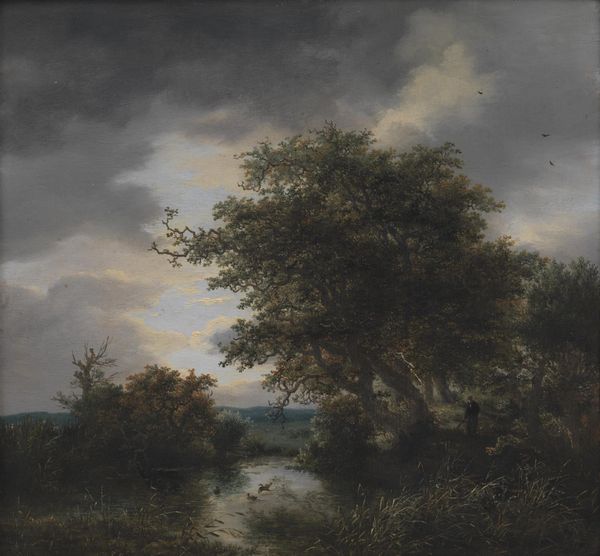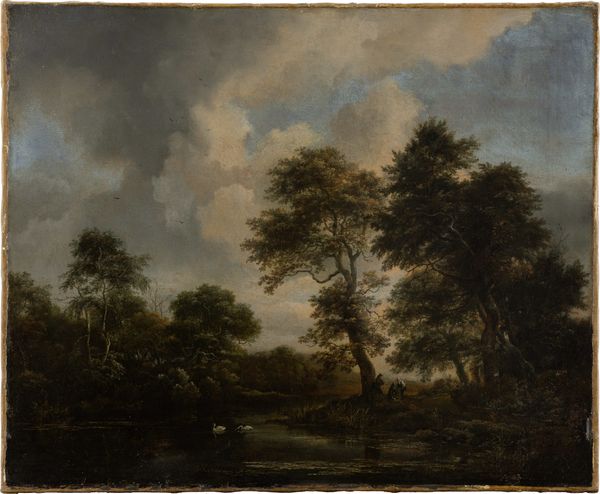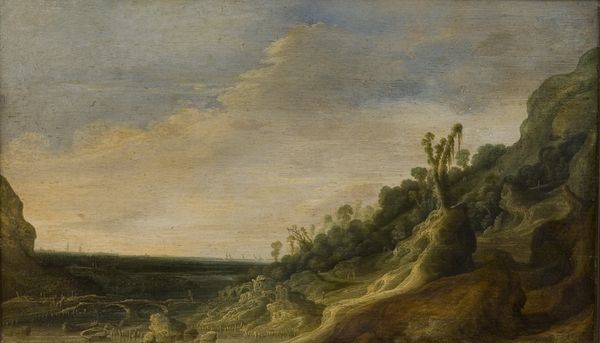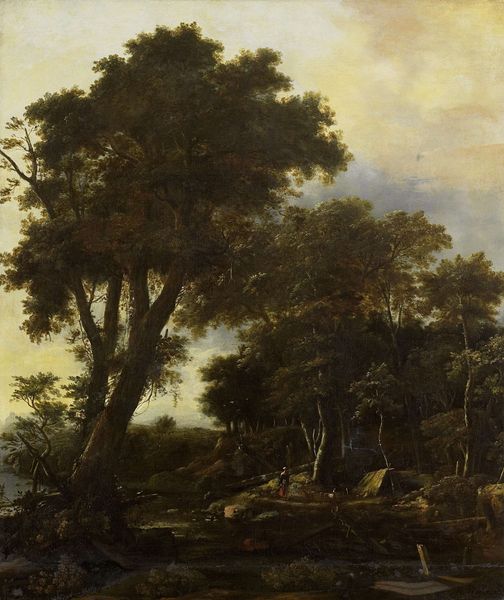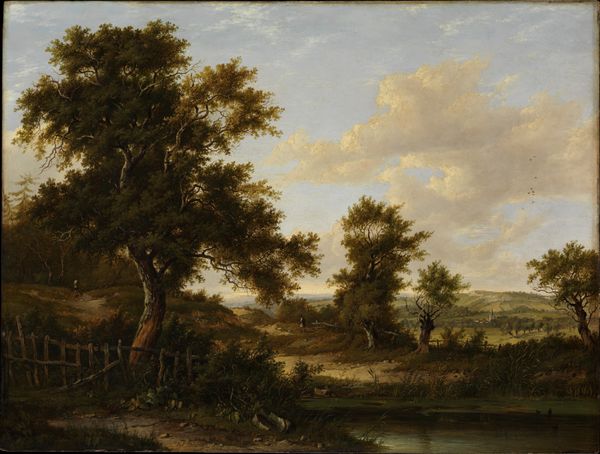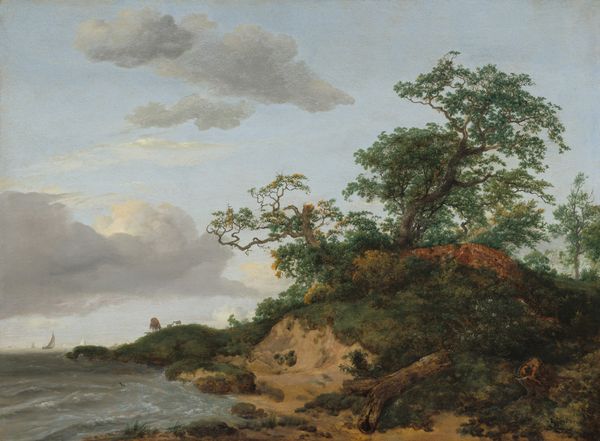
painting, oil-paint
#
dutch-golden-age
#
painting
#
oil-paint
#
landscape
#
oil painting
#
genre-painting
#
realism
Dimensions: height 32 cm, width 42.5 cm, height 44.5 cm, width 54.5 cm, thickness 7 cm
Copyright: Rijks Museum: Open Domain
Jacob van Ruisdael made this small landscape painting, "Sandy Track in the Dunes", using oil on wood. Oil paints are made from pigment, often derived from ground minerals, mixed with linseed oil. Ruisdael would have carefully layered thin glazes to create the luminous atmosphere. The smooth wood panel allows for incredible detail, as seen in the textures of the foliage and the sandy track itself. The painting offers a glimpse into the Dutch countryside, a world increasingly shaped by human activity, where land was reclaimed and managed for economic purposes. In other words, Ruisdael is not just showing us a scene, but a system. We can see this in the way the road cuts through the dunes, suggesting a connection between rural life and emerging urban markets. This composition reminds us of the way human intervention shapes even the most natural landscapes. Consider how the seemingly simple materials of paint and panel can convey complex relationships between nature, labor, and the burgeoning Dutch economy.
Comments
rijksmuseum about 2 years ago
⋮
A sandy track winds along a dune, at the top of which two people enjoy the view. Ruisdael linked various visual elements together, from the reeds in the foreground to the horizon in the distance. The curve of the path is continued visually in the treetops. In this juvenile work, Ruisdael was already exploring ways of enhancing the palpability of a landscape.
Join the conversation
Join millions of artists and users on Artera today and experience the ultimate creative platform.
